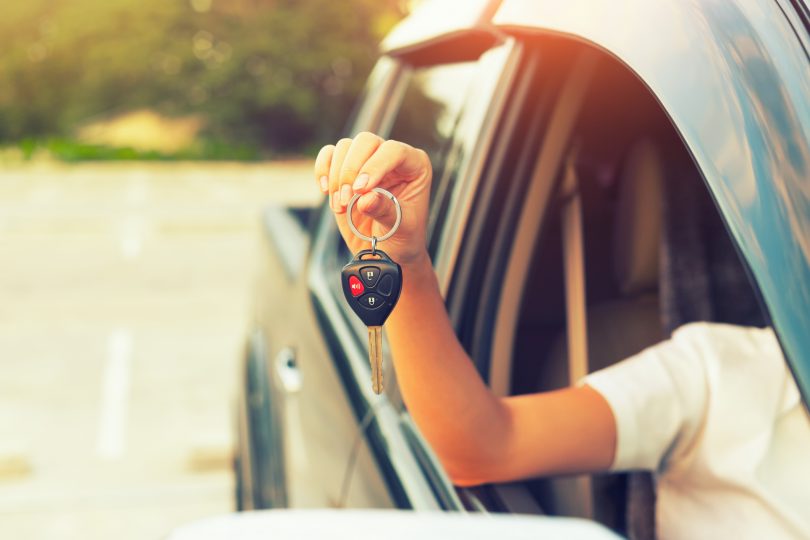
The first few months your newly-licensed offspring take to the road unsupervised is quite possibly one of the most nerve-racking periods of parenthood. Not only do you want to know your not-so-little one is getting a good deal on their first car, but you also want some reassurance they’ll be as safe as possible from the moment they start driving.
While getting a first car is a big step toward becoming independent for any young person, there’s no harm in offering a little help to make the transition a smooth one. If you’re helping your kids to get on the road in their first car, here’s a few helpful things to consider.
1. Set a budget
Whether your child is fronting up the cash for their first car or you’re planning to give them a helping hand, working out how much you can spend is the first step to finding the right vehicle.
While we’d all like our kids to take to the road in a brand-new car equipped with all the latest and greatest safety features, the reality is very few of us can afford to buy new, with most first cars being second-hand early-model vehicles.
Budget will often dictate the range of available options when selecting a car, so to ensure they don’t waste time looking at cars that are out of their price range, try doing some research using an online car valuation tool to find out the market value of their favourite makes and models.
Then the search for the best price begins. Online car auctions are a good way to go.
Unlike buying through a dealership that wants to take their cut from the purchase price or through a private seller where all negotiations with other buyers are done behind closed doors, the online auction process is completely transparent. Because you can see exactly who else is bidding on the car, there’s no opportunity for the seller to try to unfairly inflate the price beyond the true market value of the vehicle.
2. Research the vehicle
Once they’ve found a car they like, a little research can go a long way to making sure they don’t accidentally purchase a dud.
Safety is of the utmost importance, so doing vehicle safety rating check is well worth it. You can do this by visiting the how safe is your car website which provides a free tool to find out the overall safety rating of a vehicle based on its Australasian New Car Assessment Program (ANCAP) rating and the Used Car Safety Ratings (UCSR).
Before handing over your money, it’s also worthwhile arranging a pre-purchase mechanical inspection. Usually costing a couple of hundred dollars, a mechanical inspection will give you an assessment of the condition of the vehicle by looking at everything from the brakes, steering, suspension, drive line and exhaust to identify any potential issues.
It’s also worthwhile doing some research about the history of the vehicle so you don’t come across any nasty hidden surprises down the track. You can check the registration and some other basic details of the vehicle through the Access Canberra website (for ACT vehicles), or if you’re purchasing a vehicle from interstate, the roads and licensing authority in the relevant state or territory.
For a small fee, you can also run a check on the Personal Properties Security Register which will tell you if there is any money owed against the vehicle and any other information about the history of the vehicle, like if it’s been stolen or written-off.
3. Ensure their insurance is sorted
The other thing you’ll need to do is make sure they have their insurance sorted before they start driving the car.
In the ACT, they’ll need Compulsory Third-Party (CTP) insurance as a minimum, however if there’s a secured loan against the vehicle, the lender will most likely require them to take out comprehensive insurance.
Insurers historically allowed you to take out a cover note which would cover you for a short period before committing to the policy, however these are no longer available. Most insurers now offer a cooling-off period instead, giving you some flexibility if you decide you want to change providers after taking out a policy.
It’s worth getting a few quotes from different providers before choosing your policy, as various providers will offer different deals for P-Platers who will typically be up for higher premiums than more experienced drivers.
Finally, you should also make sure they’ve signed up for emergency roadside assistance, so they can get help if the car breaks down unexpectedly.
























